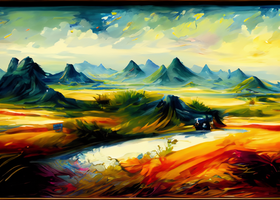The Whirl of the Clock: Unraveling Indiana's Time Zone Controversies

In the grand tapestry of American history, few discussions have been as enduring and contentious as the debate over time zones in the state of Indiana. Governed by a unique set of rules that has zigzagged through time, understanding Indiana's complex relationship with time zones is no easy feat. Let's dive into Indiana's checkered past and its temporal controversies.
Crossing Times: Indiana's Early Days
Before the 1960s, Indiana, much like the rest of America, navigated a confusing hodgepodge of local times. Each town or county decided on its own local time, causing a myriad of inconsistencies and confusion. It wasn't uncommon for neighboring towns to be an hour apart, resulting in disrupted schedules and missed appointments.
Coming to the rescue was the Uniform Time Act of 1966, which aimed to establish a standardized clock-changing practice across America. But tradition is a tough nut to crack, and Indiana chose to carve its path, primarily exempting itself from observing Daylight Saving Time (DST).
The Great DST Divide
From 1966 onwards, a significant portion of Indiana decided to stick with Eastern Standard Time (EST) throughout the year. On the other hand, a few counties in the northwest and southwest corners of the state near Chicago and Evansville chose to abide by Central Time, maintaining alignment with neighboring regions.
This decision ignited a series of debates. The non-observance of DST was beneficial for farmers whose tasks were related more to sunlight than the clock. On the contrary, businesses and communication networks grappled with the irregularity, especially in the summer when the Hoosier state was out of sync with neighboring regions and states.
Observing or ignoring DST?
The political swirl regarding the non-observance of DST reached a climax when Indiana lawmakers brought a bill up for discussion in 1991. The controversial bill, which aimed to bring the entire state into sync with DST, ended in a tie in the Indiana Senate. The tie-breaking vote, cast by the Lieutenant Governor, favored DST observance. However, the change was quickly reversed due to severe public outcry, solidifying Indiana's exemption status from DST once more.
2005: Time for Change
Fast-forward to April 2005, when the controversial time issue re-emerged, attracting a state-wide debate. After a closely contested legislative battle, lawmakers decided that beginning April 2006, the entire state would fully observe Daylight Saving Time.
Furthermore, a few counties that were in the Central Time Zone would switch to Eastern Time. This monumental shift ended much of Indiana's historical anomalous relationship with DST. Today, most of Indiana operates on Eastern Time, and the state now springs its clocks an hour ahead in March only to fall back to Standard Time in November.
Clocking The Controversy
The debate around time zones in Indiana is deeply entrenched with cultural, economic, and political implications. While time-keeping might seem like an odd cause of controversy, it reflects the complex interplay between various strife factors, from farming needs and business interests to practicality and tradition.
Indiana's time zone history reminds us that the measure of time is not purely a matter of ticks and tocks. It invariably intertwines with our individual lives and collective heritage, a testament to our enduring endeavor to order our days in a diverse and dynamic world. Even as the hands of time continue to turn, Indiana's journey through the hours offers valuable lessons on tradition and change, unity and dissent.
As we navigate the captivating narratives of different time zones, Indiana's unique chronology showcases the fascinating interplay of cultural, economic, and political factors in the realm of timekeeping. Along this journey through time, Find Your Five PM is your companion, presenting a shared moment of 'five o'clock' across more than 199,000 global cities, including those in the captivating state of Indiana. Despite the state's complex relationship with time, with our platform, you'll be reminded that it's always five o'clock somewhere. Discover exactly where with Find Your Five PM, and appreciate the diverse rhythms of our world as each location inches towards its individual 'five o'clock', unifying us all in a globally shared temporal experience.



